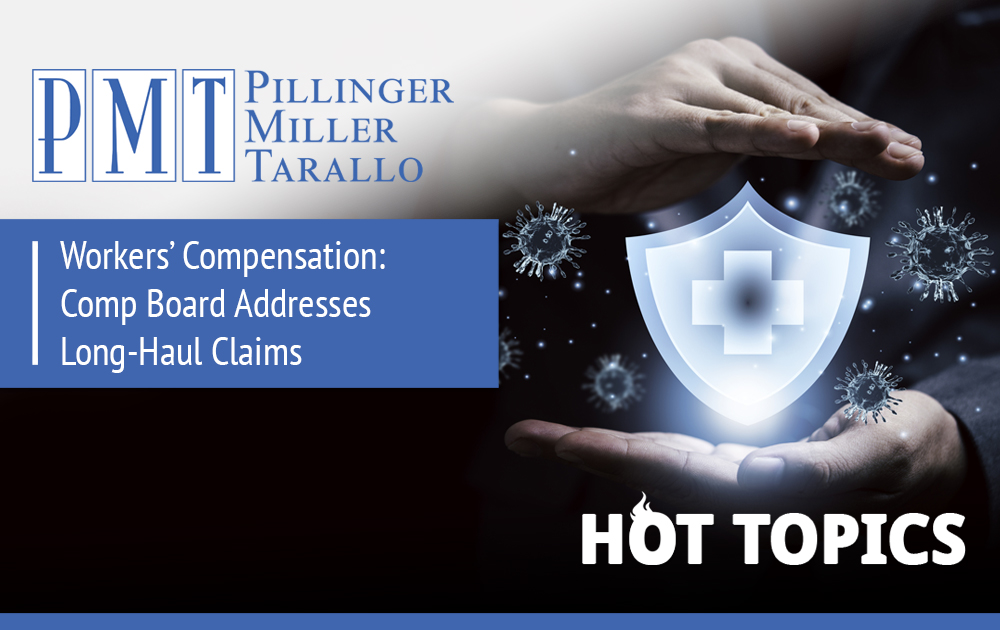
By Anthony M. Napoli, and Charlene Stewart Barnaba.
After almost two and a half years, the effects of Covid have been far reaching. One of the well-documented effects is long haul sufferers, those people who, after having been infected, continue to experience symptoms.
The New York State Workers’ Compensation Board has responded to claims of injured workers with COVID-19, including those suffering from ongoing or “long-haul” symptoms, by ensuring that claims of those workers are quickly handled and benefits paid promptly. The claimant must show that COVID-19 occurred in the course of employment by demonstrating prevalence. Prevalence is evidence of significantly elevated hazards of environmental exposure that are endemic to or in a workplace, showing that the exposure level is extraordinary. A claimant may demonstrate prevalence through evidence of the nature and extent of work activities, including significant contact with the public and/or co-workers in an area where COVID-19 is prevalent. Public-facing workers and workers in highly prevalent COVID-19 environments are the types of workers who can show that the exposure was at such a level of elevated risk as to constitute an extraordinary event.
Claimants working in an environment with significantly higher exposure risks are more likely to have compensable COVID-19 claims. These include health care workers, first responders, transportation workers, corrections officers, and food service workers. Some claimants may also have work-related claims if they directly interact with the public while working, such as retail workers. However, the claimant does not need to be an essential worker to meet the burden of establishing the case.
To support a claim, the claimant may provide a medical report from an authorized workers’ compensation medical provider stating that the claimant’s work caused the illness. A positive test result is best.
In addition, the claimant must provide notice to the employer as soon as possible. Once the employer receives notice, it must immediately contact its workers’ compensation insurance carrier. The insurance carrier then has a time frame to act on the claim and must begin paying benefits within this time frame if the claim is accepted. Carriers have been encouraged by the Board to be helpful to claimants and to investigate and pay claims as quickly as possible.
If an employee files a claim related to COVID-19, the carrier must review it, and if it accepts the claim, the COVID-19 claim will be payable. If a claim is disputed, the Board will schedule a hearing as quickly as possible on disputed issues. The Board Panel has already held that the claimant must sustain the burden of proof as to causal relationship. The Workers’ Compensation law judge may listen to the testimony of the claimant and of the claimant’s medical providers to get the facts about the location where the claimant worked, whether the claimant was exposed to COVID-19, the extent of the exposure, and whether exposure to COVID-19 was prevalent in the claimant’s work environment. In order to establish a case, the claimant’s testimony is crucial, and establishing a case may even require testimony from the employer.
In the end, the Board will attempt to ensure that benefits are promptly paid to affected workers, allowing them to pay their bills and continue supporting their families.
If you would like to know more, please reach out to the Workers’ Compensation professional attorneys at Pillinger Miller Tarallo, LLP. Call (914) 703-6300 or email us.
Should you have any questions, please call our office at (914) 703-6300 or contact:
Marc H. Pillinger, Executive Partner
mpillinger@pmtlawfirm.com
Jeffrey T. Miller, Executive Partner
jmiller@pmtlawfirm.com